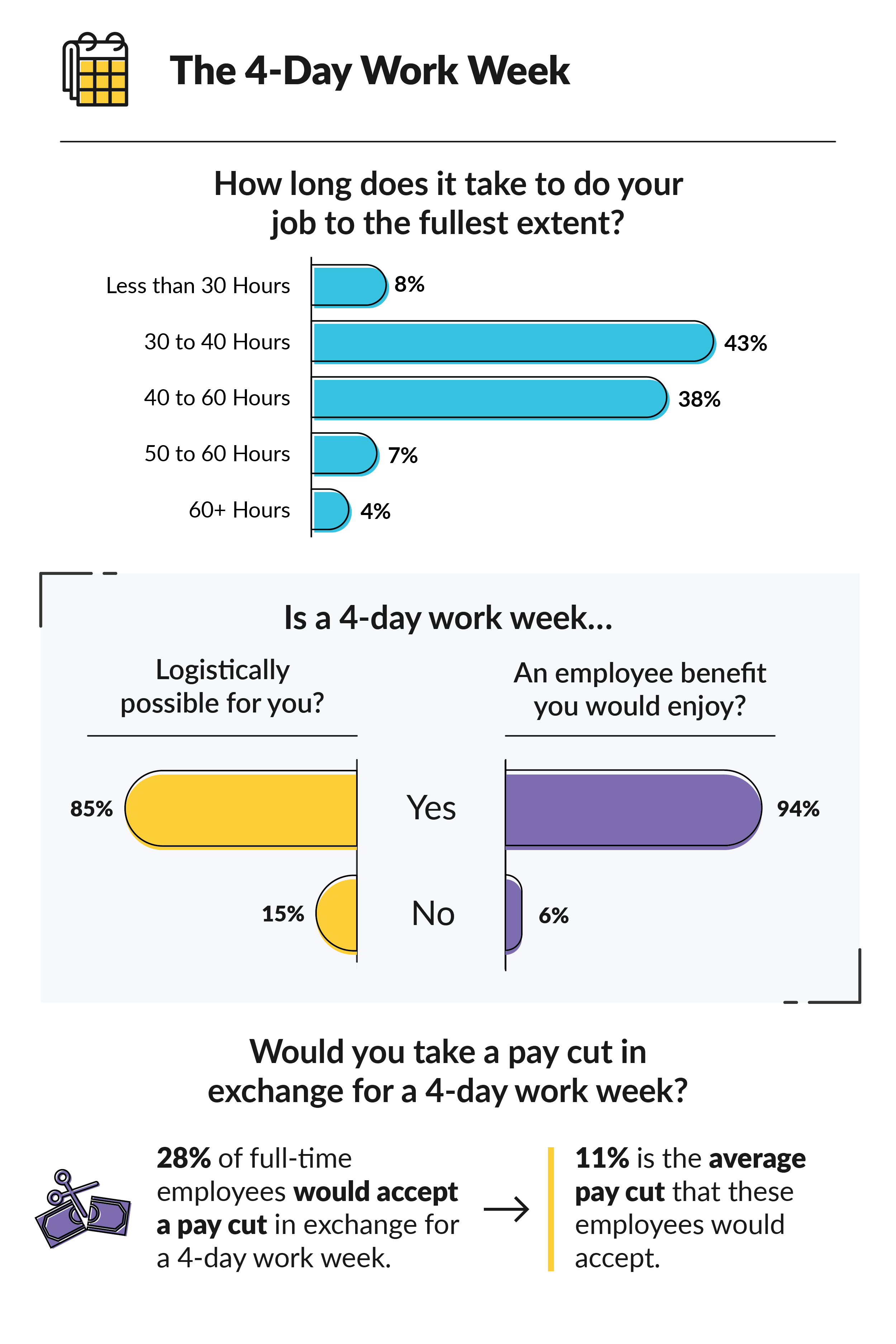More and more companies are experimenting with 4-day work weeks in order to combat employee stress and burnout, retain and recruit employees during the Great Resignation, and adapt to the more remote-oriented work landscape that the COVID-19 pandemic has created. A 4-day work week can mean either a typical work schedule compressed into four days or a reduced number of weekly hours, such as four 8-hour days. Indeed, research and anecdotal evidence from companies which have shifted to 4-day work weeks shows that productivity can be maintained even when the number of weekly work hours are shortened.
In order to understand the employee perspective on 4-day work weeks, we surveyed 2,346 full-time salaried U.S. employees in October 2021 about their views on having a 4-day work week. While an overwhelming majority of salaried employees view a 4-day work week favorably, relatively few would take a pay cut in exchange for working fewer days.
Our survey results show that a 4-day work week is logistically possible for most full-time employees. Only 15% of employees reported that a 4-day workweek is not feasible for them. Additionally, most employees (51%) said that they can do their job to the fullest extent in 40 hours or less. Therefore, these workers should be able to work four 10-hour days (or even shorter days) instead of five 8-hour days. While over a third of employees (38%) say they can do their job in 40 to 50 hours per week, 7% said they need 50 to 60 hours per week to do their jobs to the fullest extent, and 4% reported needing over 60 hours.
We find that a 4-day work week would be extremely popular with workers. Among our survey respondents, 94% say that a 4-day work week would be an employee benefit that they would enjoy. We asked, “On a scale of 1 to 5, how much would you support a 4-day work week at your current job?” Eighty-six percent responded with a 4 (support) or 5 (strongly support).
However, most full-time salaried employees would not take a pay cut in exchange for a 4-day work week. Twenty-eight percent said they would be willing to take a paycut compared to 72% of job seekers who said they would not. For those willing to take a pay cut, the average pay cut they would accept is 11%. One-third of those willing to take a pay cut would only be okay with a 5% pay cut or less in exchange for a 4-day work week, while 40% would be okay with a 6-10% pay cut, 20% would be okay with a 11-20% pay cut, and just 6% would be okay with a 21-30% pay cut.
On average, full-time U.S. workers work 8.5 hours per day, according to the Bureau of Labor Statistics. For a 5-day work week, this amounts to 42.5 weekly hours. Research from Stanford University shows that hourly productivity drops off sharply after 50 hours per week, and after 55 hours per week, productivity is so low that any hours worked beyond that are pointless.
Universal adoption of a 4-day work week is likely a pipe dream. The corporate and cultural barriers are too ingrained, and many employers would be hesitant to make a major schedule change like this. However, for the right organization and set of employees, the 4-day work week has clear advantages that can make it a highly appealing option. As the corporate world continues to evolve, it wouldn’t come as a surprise if this is a trend that continues to grow in popularity in the years to come.







